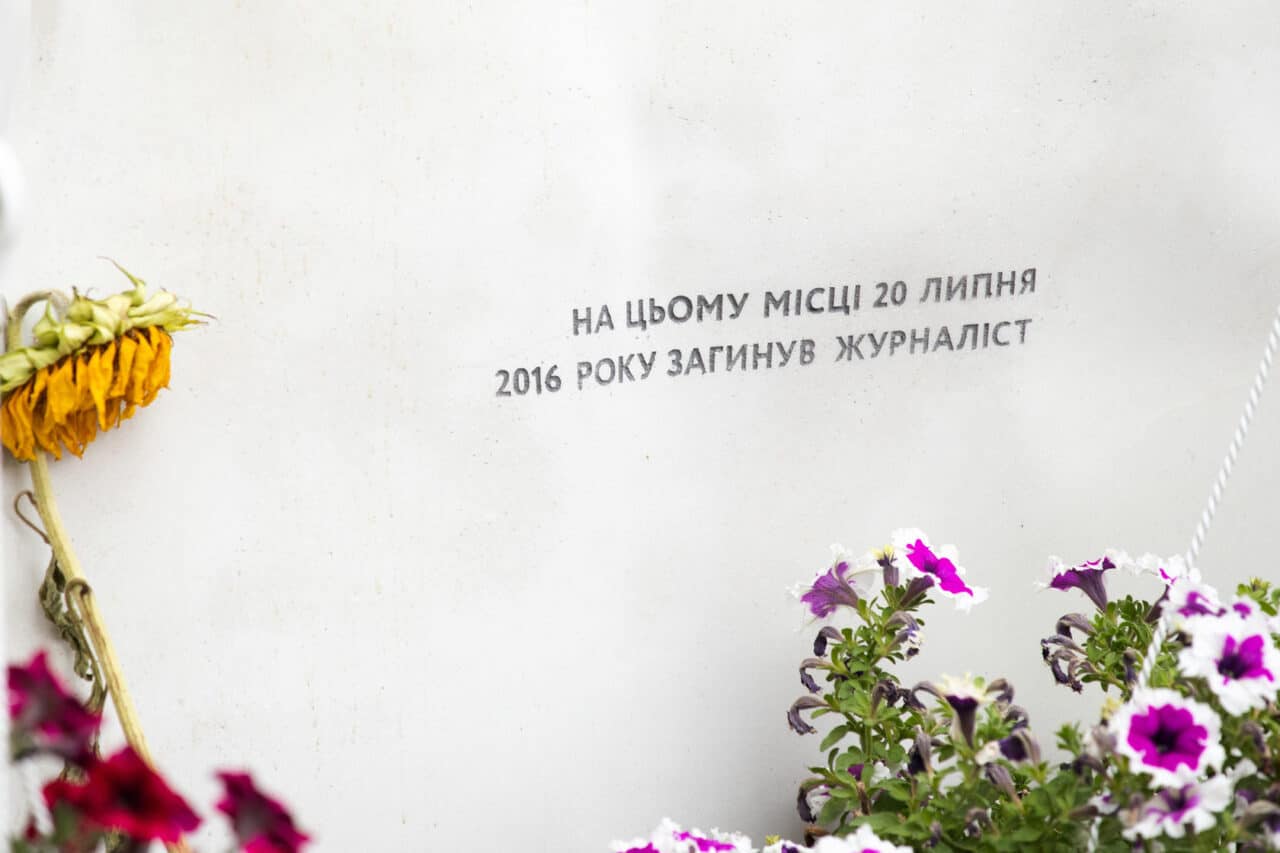Memorial Sign to Pavlo Sheremet: Artistic Practices in the Field of Commemoration

At the end of July 2020, a memorial sign to the journalist Pavlo Sheremet was opened in Kyiv. The significance of this event — perhaps not yet fully understood — lies not only in the social and political sphere but also in the artistic sphere. It is an example of how modern art joins the work with collective memory. We learned about the history of the project’s design and its implementation.
The author of the memorial sign was sculptor Nazar Bilyk. Maxym Kozub developed architectural solutions for the project. At the request of Pavlo Sheremet’s relatives and colleagues, who initiated and financed the installation, they proposed a minimalist monument: a white marble stele in the form of a creased sheet of paper. It was the first and only idea presented to the mother and friends of the deceased journalist.
“I understood that I might not be able to turn this idea into reality”, said the artist, “but I wanted to move away from the fixation on weeping and regrets and do something bright. So it’s not a portrait; it’s something more global, about broader senses. Of course, if this sheet were made of bronze, it would be perceived as a tragedy. But this is what we wanted to overcome”.
All photos by Yevgen Nikiforov
IT BECAME THE PERSONIFICATION OF PAVLO SHEREMET, AND THE WHITE PAPER BECAME THE FIELD OF LIFE AND THE WORDS OF THE MAN WHO HAD THE POSITION AND THE COURAGE TO DEFEND IT.

Like any sculpture, it is better to see this work live. Photos do not convey the sense of personal interaction, texture, or engagement with the environment. If you are near the area at night, says Nazar Bilyk, be sure to look at the lighting: in the dark, this monument looks even better than in daylight.




